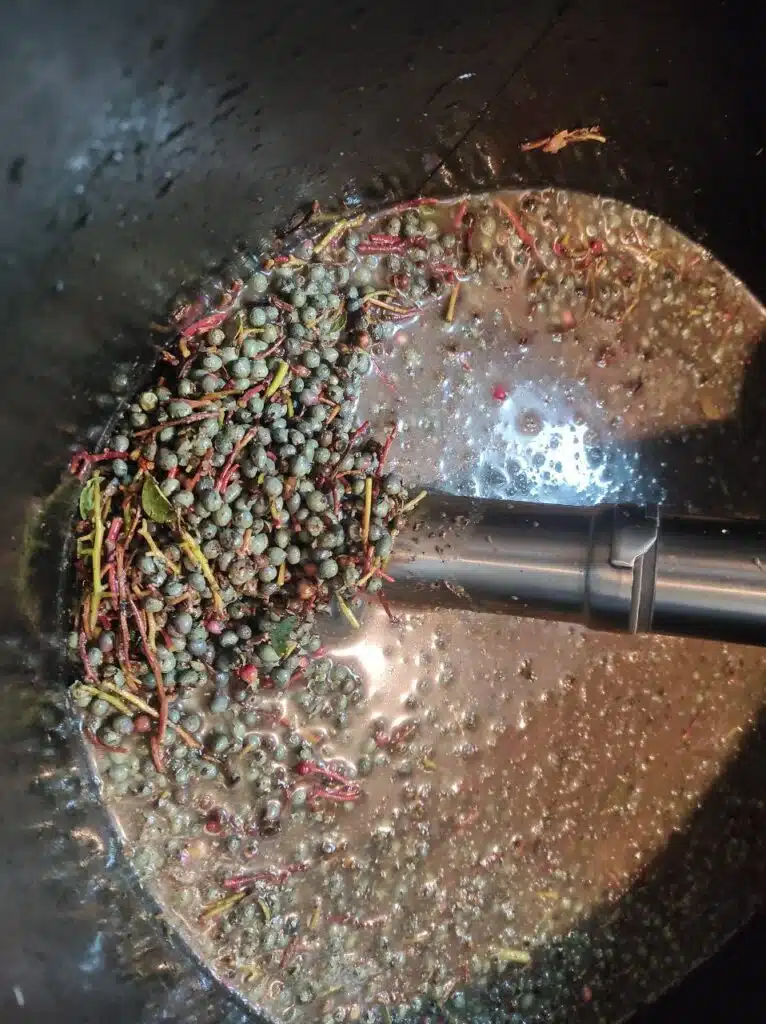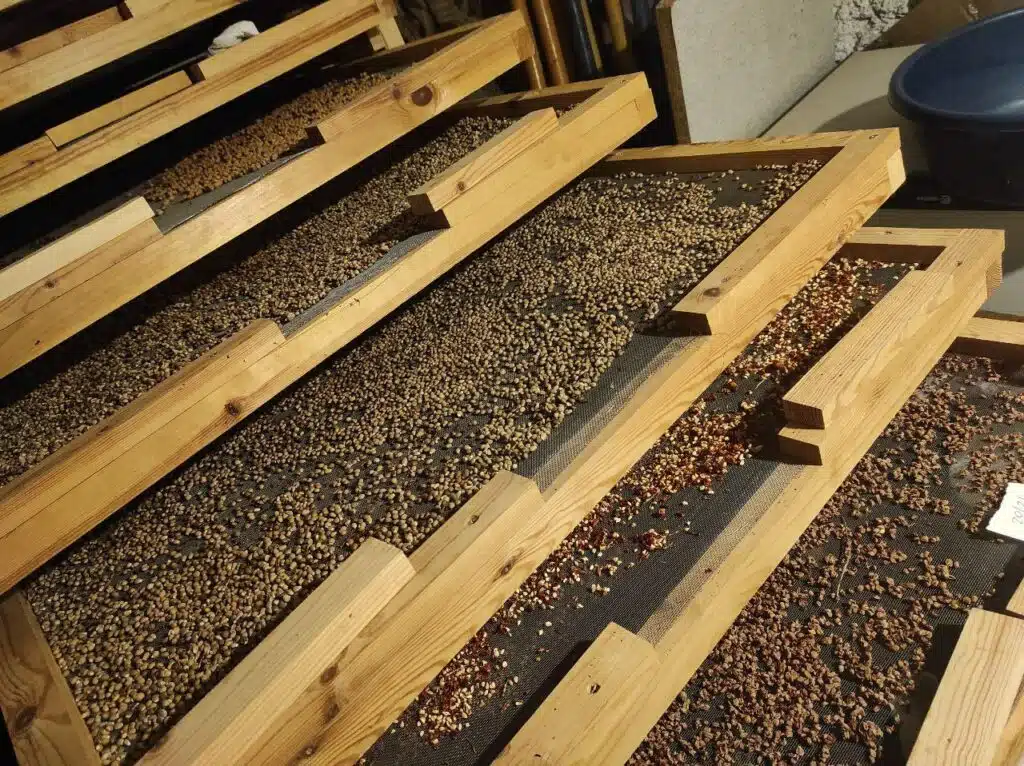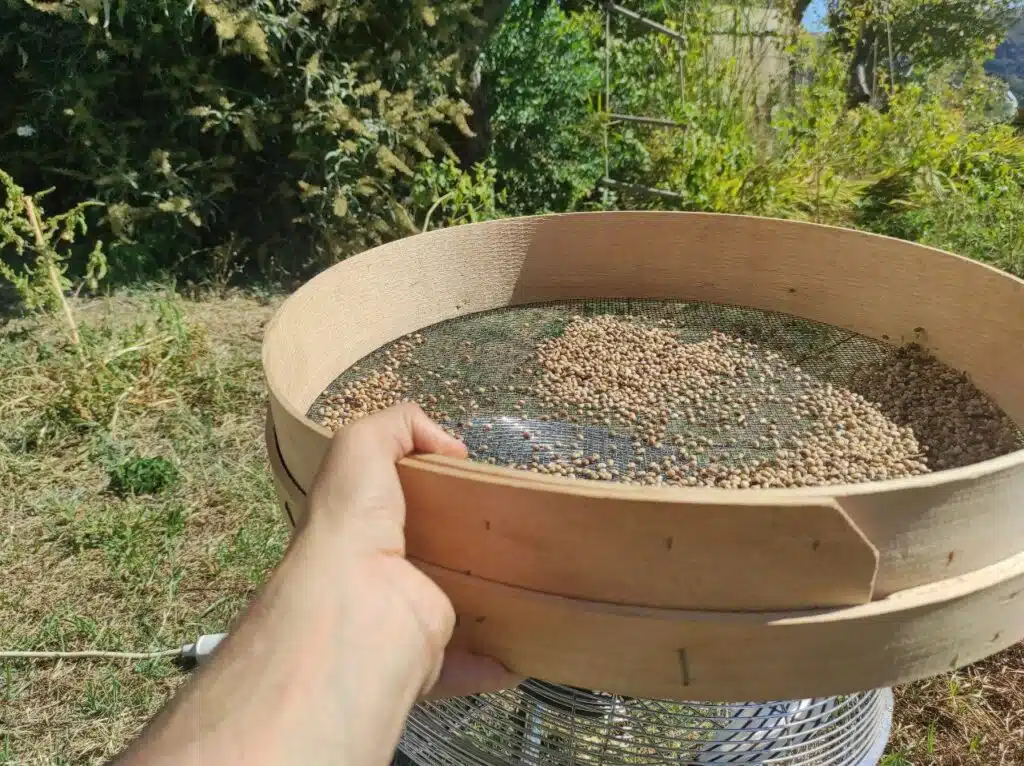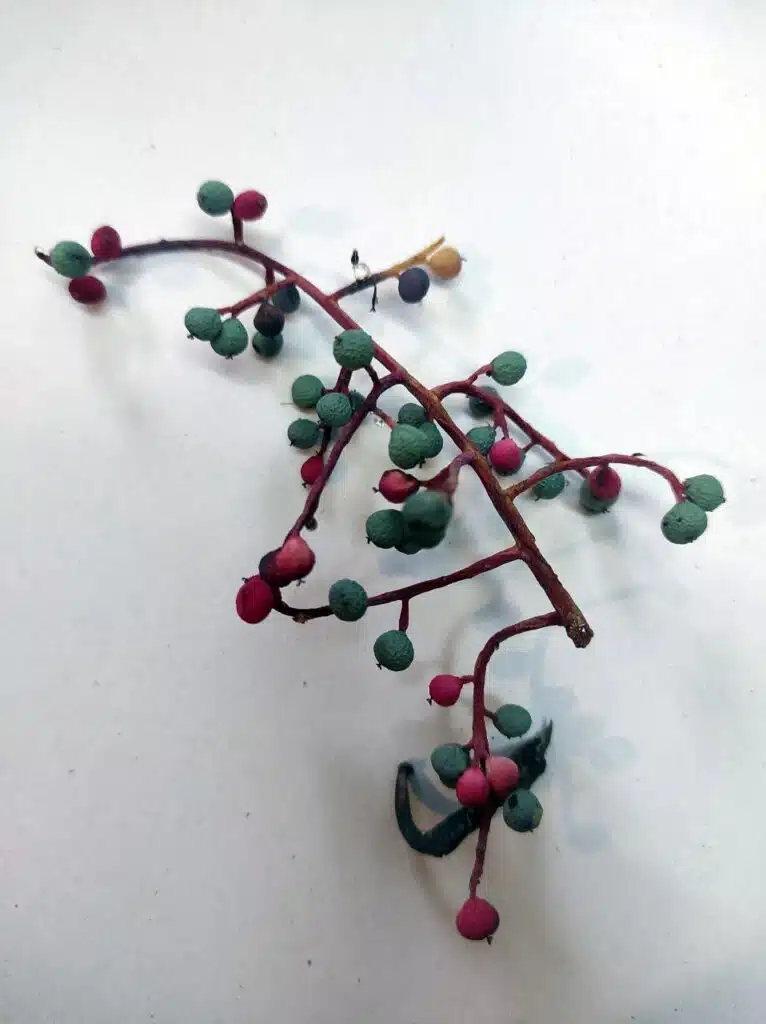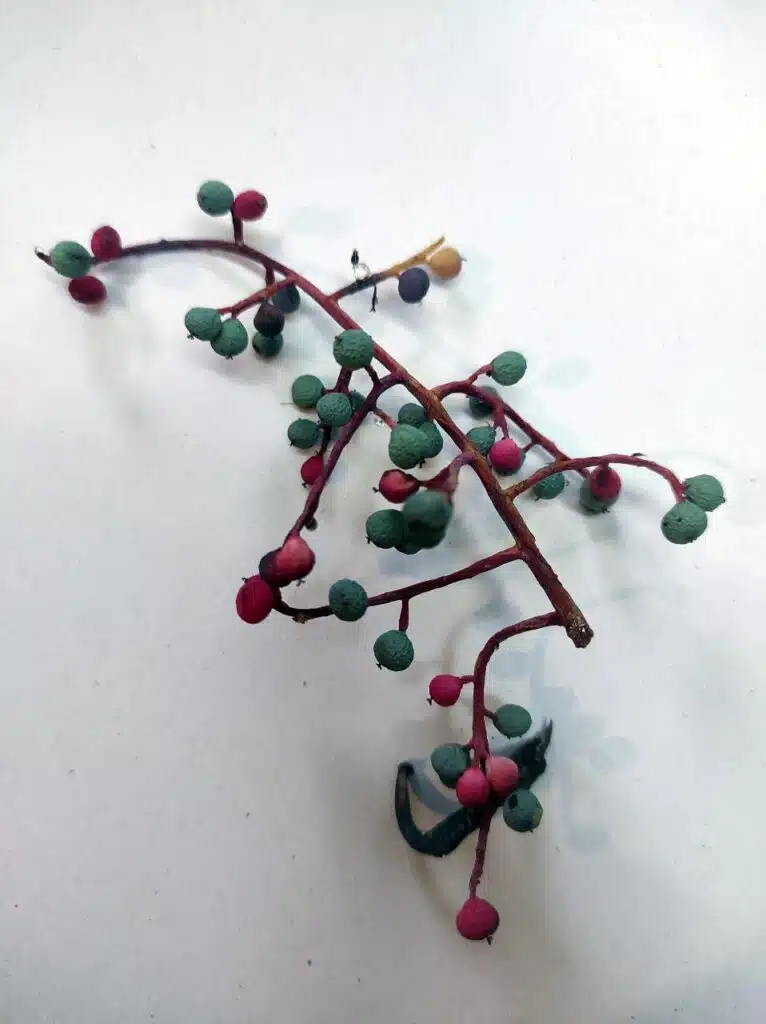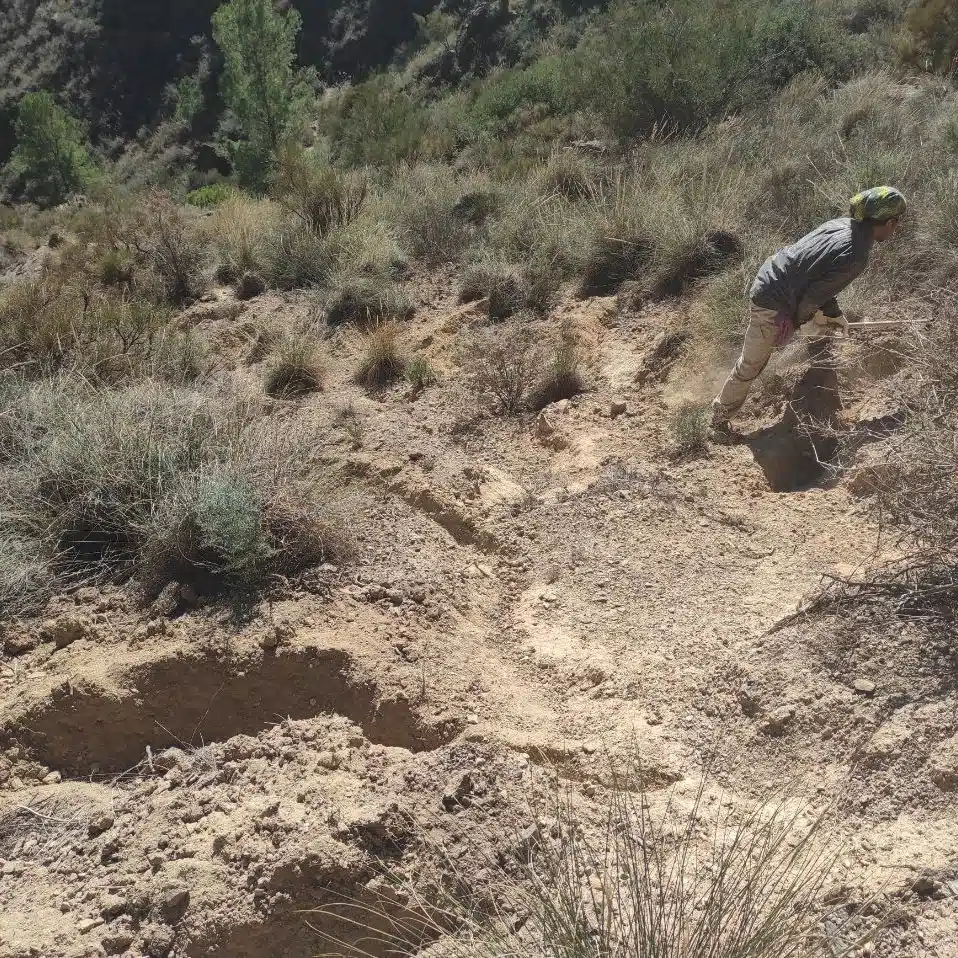Autumn always arrives laden with fruit, and this year has been no exception thanks to the spring rains. At Semillistas, we are especially excited because we have finally been able to harvest cornicabra, Pistacia terebinthus, a seed we have been wanting to collect for a long time. Not every year do the seeds manage to ripen optimally for germination, but this year, with patience and dedication, we did it!
Each twig we collected contained seeds of different colors: bluish green and red. The red seeds are empty and cannot be used for germination, while the blue-green ones are the ones that will allow us to continue our reforestation work. Harvesting is only the first step; then we must separate the seeds from the twigs, float them to identify the best ones, soak them for a day, and beat them carefully to remove the pulp without damaging the seed.
Once clean, we spread them out in our drying cabinet until they are completely dry. Wearing gloves, we scrape the seeds to remove any remaining dry skin and use a fan to remove the last impurities. Finally, we store them in airtight bags in the refrigerator, ensuring that they remain in perfect condition for several years.
It is a meticulous and laborious process, but each step is filled with excitement. Knowing that these seeds can become new trees and contribute to reforestation fills us with hope and reminds us why we do what we do. Each seed is an opportunity to regenerate our forests and care for the planet we share.
